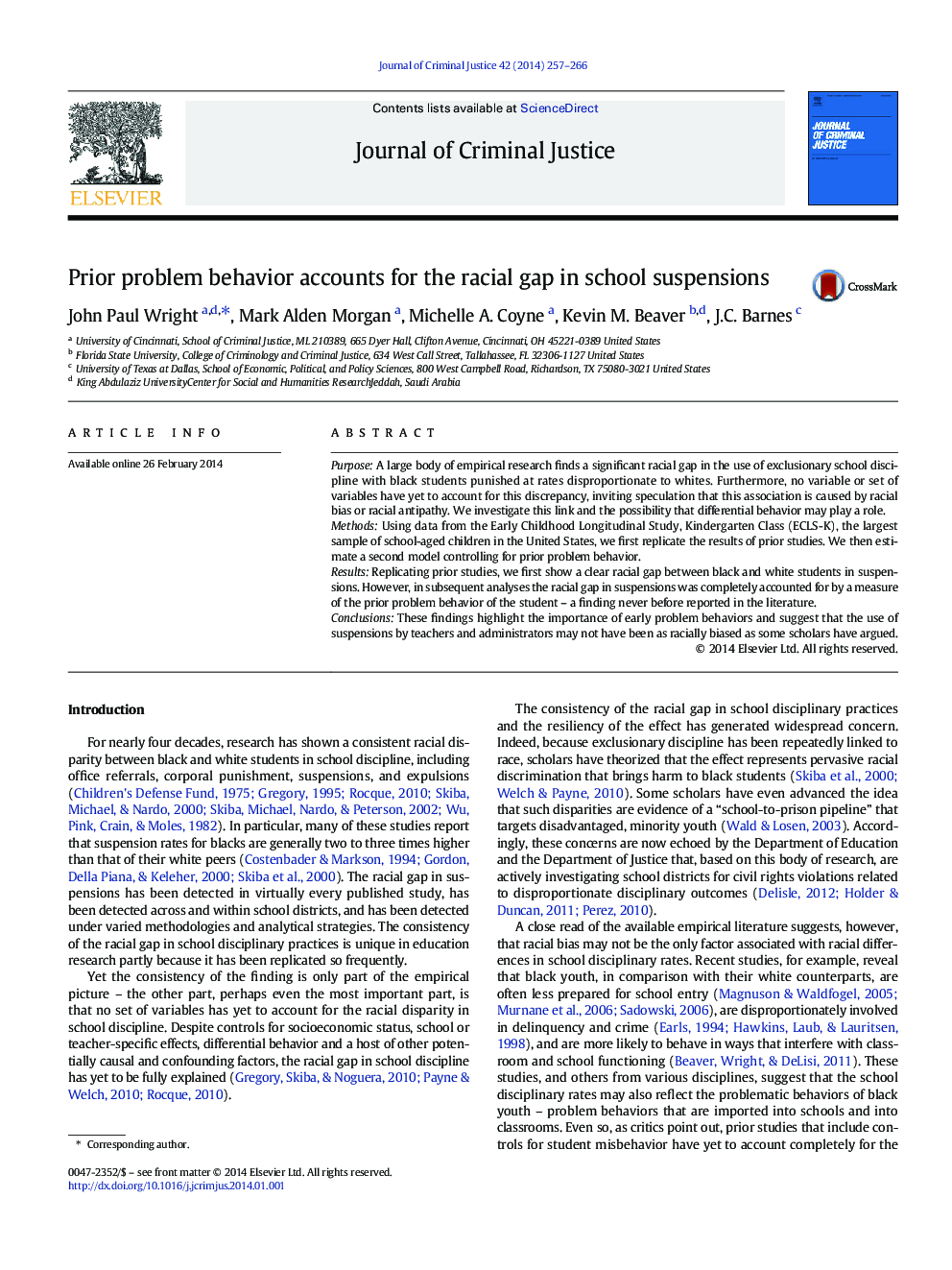| Article ID | Journal | Published Year | Pages | File Type |
|---|---|---|---|---|
| 882764 | Journal of Criminal Justice | 2014 | 10 Pages |
•We replicate the initial black-white racial gap in school suspensions.•We then control for the prior problem behavior of the student.•This secondary analysis completely accounts for the racial gap in suspensions.•These findings underscore the stability of individual behavior from an early age.•Explanations of racial bias and discrimination are also called into question.
PurposeA large body of empirical research finds a significant racial gap in the use of exclusionary school discipline with black students punished at rates disproportionate to whites. Furthermore, no variable or set of variables have yet to account for this discrepancy, inviting speculation that this association is caused by racial bias or racial antipathy. We investigate this link and the possibility that differential behavior may play a role.MethodsUsing data from the Early Childhood Longitudinal Study, Kindergarten Class (ECLS-K), the largest sample of school-aged children in the United States, we first replicate the results of prior studies. We then estimate a second model controlling for prior problem behavior.ResultsReplicating prior studies, we first show a clear racial gap between black and white students in suspensions. However, in subsequent analyses the racial gap in suspensions was completely accounted for by a measure of the prior problem behavior of the student – a finding never before reported in the literature.ConclusionsThese findings highlight the importance of early problem behaviors and suggest that the use of suspensions by teachers and administrators may not have been as racially biased as some scholars have argued.
